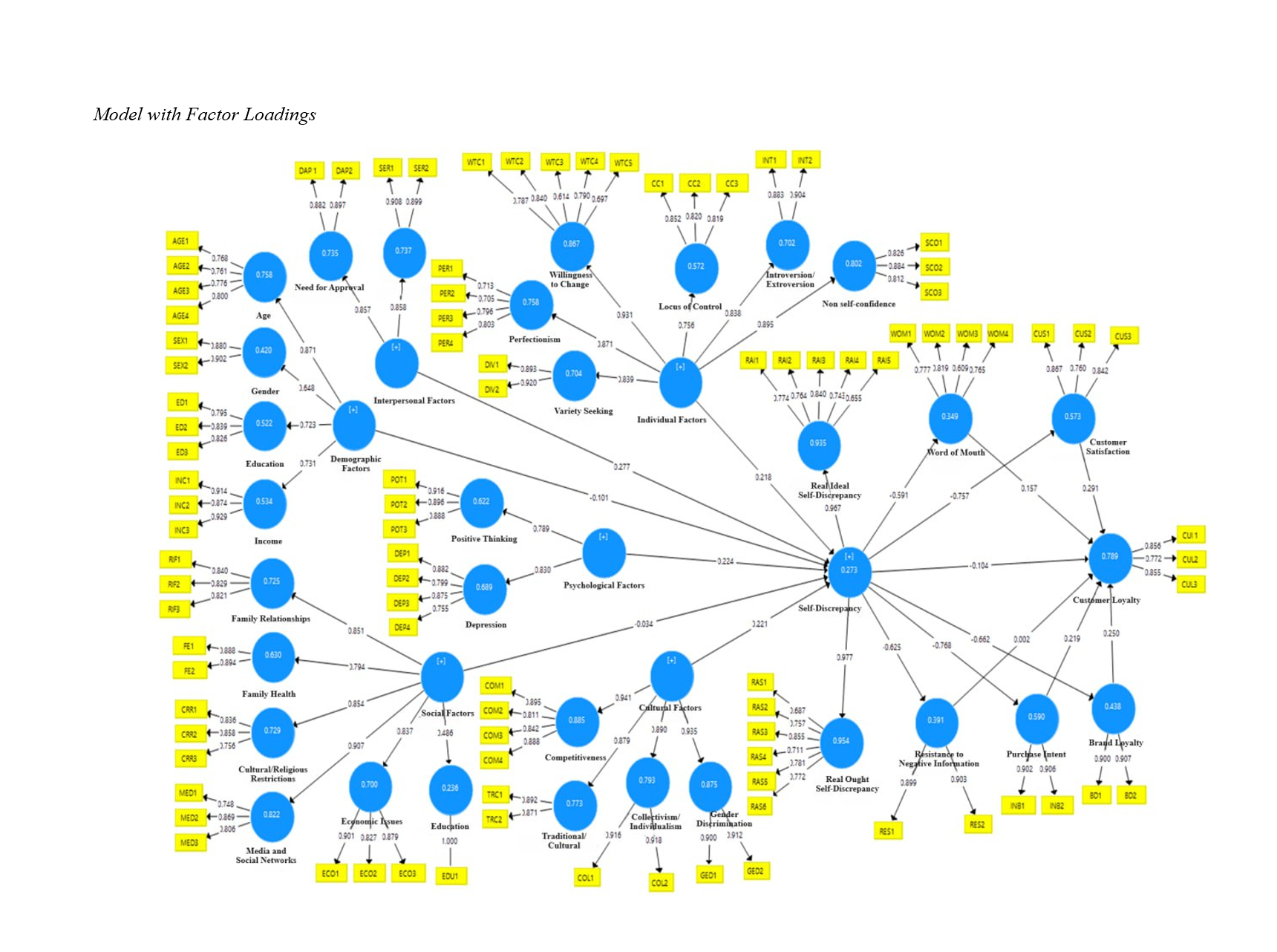Identification and Presentation of a Self-Discrepancy Model Based on Individual Differences and Its Impact on Luxury Goods Consumers' Behavior
Keywords:
Self-discrepancy, Luxury consumption, Individual differences, Digital media, Cultural factors, Socio-economic factors, Consumer behaviorAbstract
Objective: The objective of this study is to identify and present a self-discrepancy model based on individual differences and to analyze its impact on the behavior of luxury goods consumers in Qazvin, Iran.
Methodology: This study employed a mixed-methods approach, comprising both qualitative and quantitative research. Initially, a comprehensive literature review was conducted to define key variables and their interrelationships. This was followed by in-depth interviews with experts in consumer behavior and psychology to refine the conceptual model and develop the research questionnaire. The quantitative phase involved surveying luxury goods consumers in Qazvin using the developed questionnaire. Data were analyzed using Partial Least Squares Structural Equation Modeling (PLS-SEM) with the aid of SMART-PLS 3 software to test the proposed hypotheses.
Findings: The findings indicate that self-discrepancy significantly influences luxury consumption behaviors, with consumers using luxury goods to bridge the gap between their actual and ideal selves. Individual differences such as personality traits, demographic factors, and cultural background were found to significantly impact luxury consumption. Digital media and influencers were identified as crucial factors shaping consumer attitudes and purchase intentions. Additionally, religiosity and cultural norms were found to either constrain or motivate luxury consumption. Socio-economic factors like income and education levels were also significant determinants, with higher income and education correlating with increased luxury consumption.
Conclusion: The study highlights the complex interplay between self-discrepancy, individual differences, and socio-cultural factors in driving luxury consumption behaviors. It provides a comprehensive model that integrates these elements, offering valuable insights for luxury brand marketers to develop targeted and effective strategies. The findings suggest that marketers should emphasize the social and self-enhancement benefits of luxury goods, leverage digital media and influencers, and tailor their messages to resonate with local cultural values and norms. Future research should expand the scope to include more diverse samples and explore specific luxury categories in greater detail.
Downloads

Downloads
Additional Files
Published
Issue
Section
License
Copyright (c) 2024 Sepideh Najafi (Author); Mehdi Zakipour (Corresponding Author); Mojtaba Amiri Majd (Author)

This work is licensed under a Creative Commons Attribution-NonCommercial 4.0 International License.
























